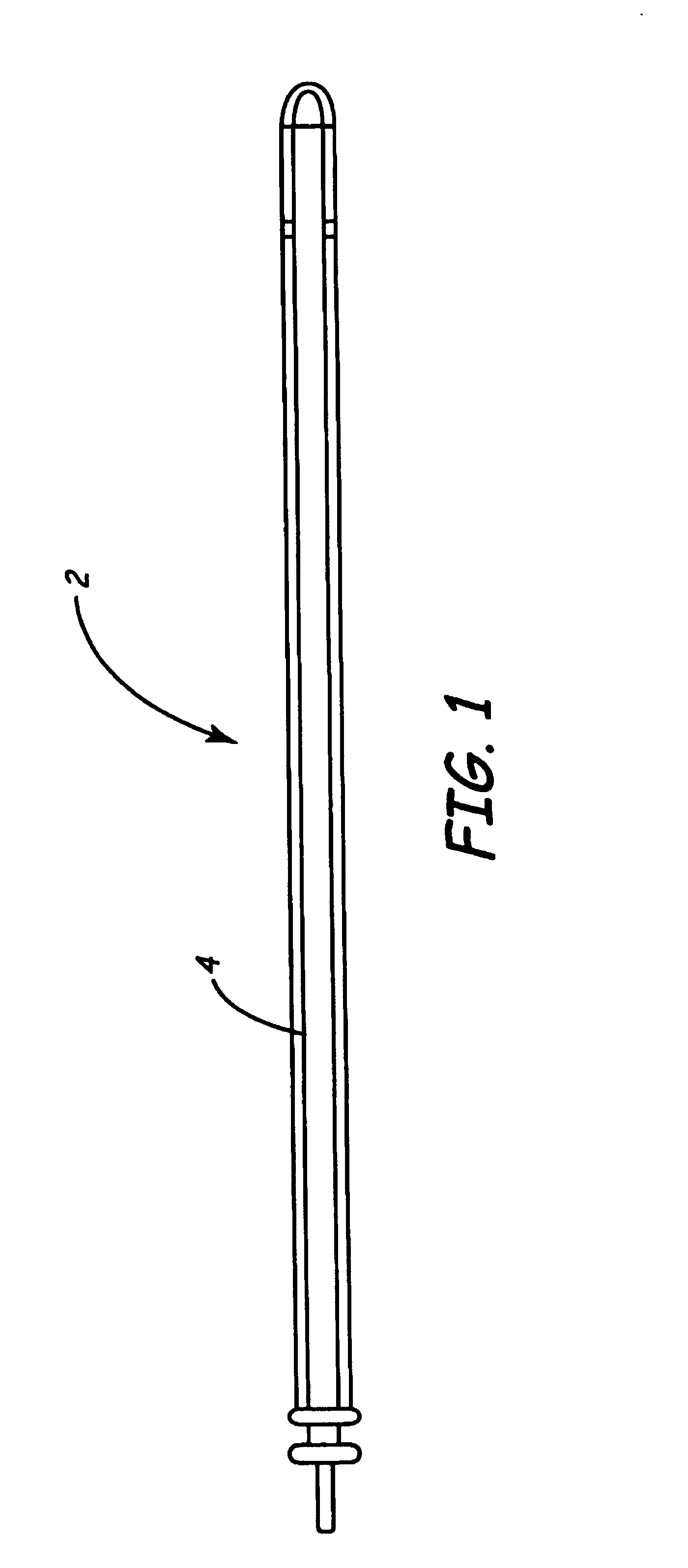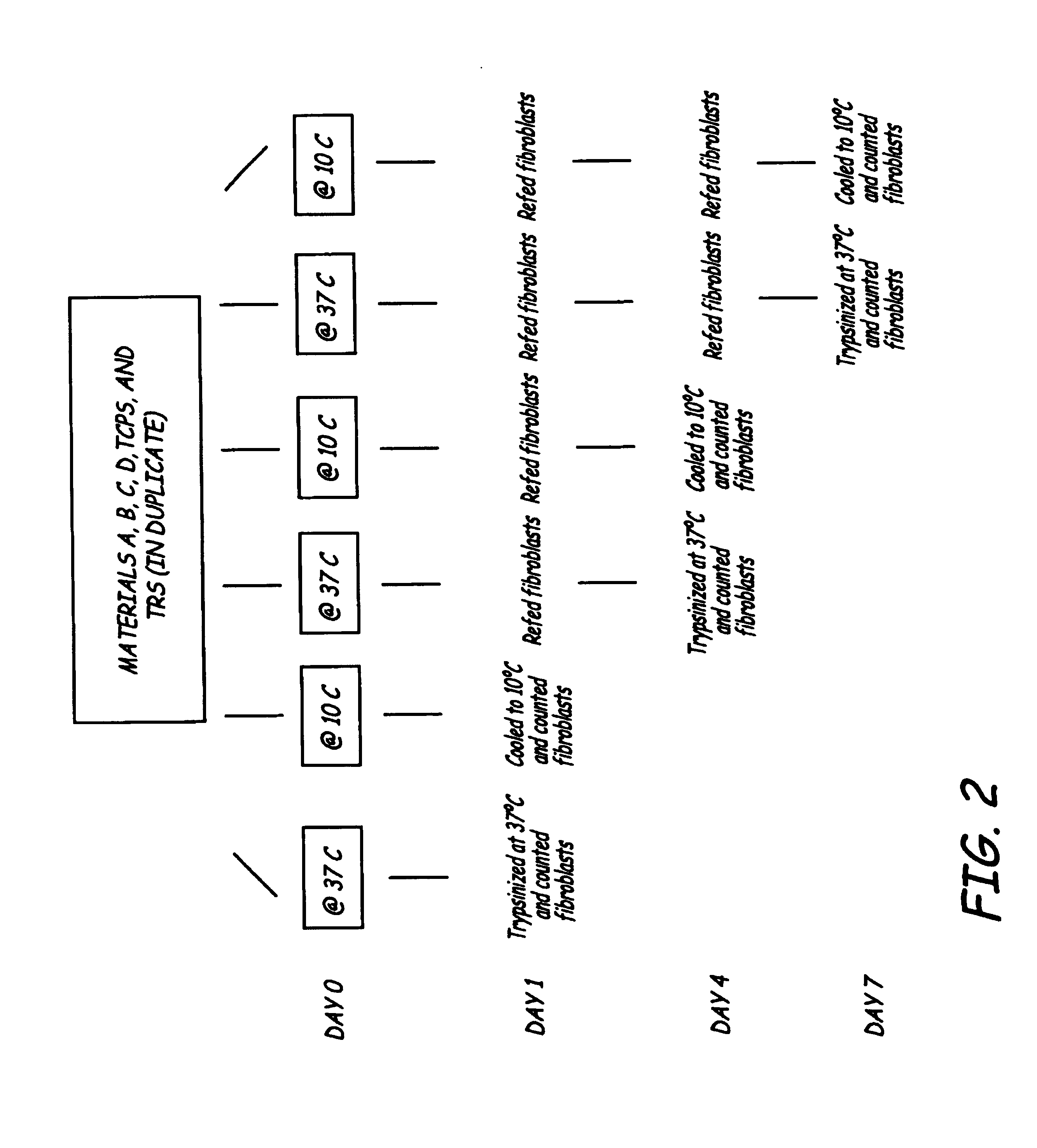Enhanced chronic lead removal
a lead removal and chronic technology, applied in the field of enhanced chronic lead removal, can solve the problems of difficult replacement or re-location of medical devices after, growth of fibrous tissue around the device,
- Summary
- Abstract
- Description
- Claims
- Application Information
AI Technical Summary
Benefits of technology
Problems solved by technology
Method used
Image
Examples
examples
[0043]Fibroblast adhesion to, and detachment from, temperature responsive polymers and modified biomaterial surfaces were investigated in a time and temperature dependent manner. The biomaterial surfaces studied were Corethane 80A, Pellethane 80A clone (P80AC), P80AC with a surface modified end group (SME) of polyethylene oxide (PEO), and P80AC with a fluorocarbon SME. Fibroblast adhesion and detachment were examined using tissue culture polystyrene (TCPS) as a control. A temperature responsive surface (TRS), created by grafting chains of Posy (N-isopropylacrylamide) (NIPAAm) onto TCPS was also investigated. Here, human dermal fibroblast adhesion on these surfaces is examined at 37° C. Also, fibroblast proliferation is evaluated over a 7-day period at days 1, 4, and 7. Finally, fibroblast detachment from the biomedical polymers using trypsin or by cooling is studied. Trypsin was used to remove all of the fibroblasts from each surface at 37° C. Cooling the TRS surfaces to 10° C. for ...
PUM
| Property | Measurement | Unit |
|---|---|---|
| temperature | aaaaa | aaaaa |
| temperature | aaaaa | aaaaa |
| pore size | aaaaa | aaaaa |
Abstract
Description
Claims
Application Information
 Login to View More
Login to View More - R&D
- Intellectual Property
- Life Sciences
- Materials
- Tech Scout
- Unparalleled Data Quality
- Higher Quality Content
- 60% Fewer Hallucinations
Browse by: Latest US Patents, China's latest patents, Technical Efficacy Thesaurus, Application Domain, Technology Topic, Popular Technical Reports.
© 2025 PatSnap. All rights reserved.Legal|Privacy policy|Modern Slavery Act Transparency Statement|Sitemap|About US| Contact US: help@patsnap.com



